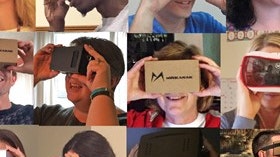Homepage
•
Learning Library
•
Blog
•
Reality revisited: Getting started with virtual reality in your classroom
Expand breadcrumbs
Expand breadcrumbs
- Learning Library
- Blog
- Reality revisited: Getting started with virtual reality in your classroom
- Homepage
- •
- Learning Library
- •
- Blog
- •
- Reality revisited: Getting started with virtual reality in your classroom
Reality revisited: Getting started with virtual reality in your classroom
By Maureen Yoder
April 6, 2016








